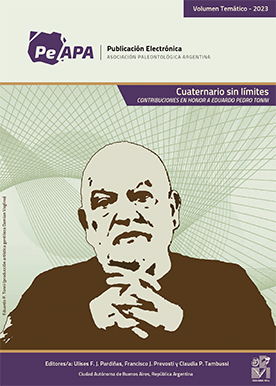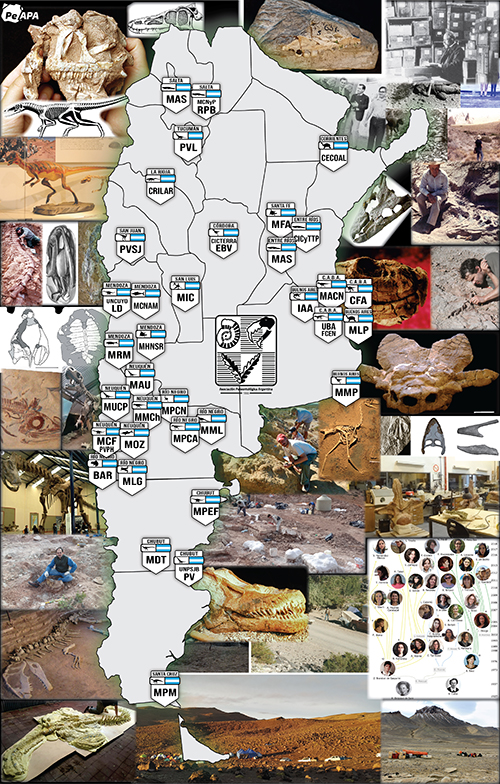CRETACEOUS RED BEDS FROM SOUTHERN NEUQUÉN BASIN (ARGENTINA): AGE, DISTRIBUTION AND STRATIGRAPHIC DISCONTINUITIES
Abstract
The Cretaceous System in western central Argentina overlies and is followed by marine rocks as the Jurassic/Cretaceous and Cretaceous/Tertiary boundaries are recognized in the Vaca Muerta/Picún Leufú Formations (Mendoza Group) and Jagüel Formation (Malargüe Group) respectively. Excellent outcrops of an almost entirely continental Cretaceous in red bed facies are exposed in southern Neuquén basin. The oldest red bed unit is the Bajada Colorada Formation which is separated by the Catanlilican unconformity (Intravalanginian) from the marine Agrio Formation. The Initial Miranican unconformity is located between the transition zone (gypsum evaporites and clays) of the Agrio Formation and the fluvial conglomerates of the La Amarga Formation. The Lohan Cura Formation follows next, overlying the La Amarga, Bajada Colorada and Agrio Formations by means of the Middle Miranican unconformity (lntraptian). Separated from the underlying strata by the Main Miranican unconformity, a series of wholly continental red beds, namely the Neuquén Group, was laid down during the Cenomanian to early Campanian. This comprises conglomerates, sandstones and claystones corresponding to fluvial, alluvial and playa lake environments. They are arranged in recurrent fining upwards sequences composed of the Candeleros, Huincul and Cerro Lisandro formations (Río Limay Subgroup), Portezuelo and Plottier formations (Río Neuquén Subgroup) and Bajo de la Carpa and Anacleto formations (Río Colorado Subgroup). The unconformity located in the Cerro Lotena area at the base of these red beds, is locally accentuated by inversion tectonics along the Huincul Fault. Such continental sedimentary conditions, together with a large supply of coarse clastics from the west, point to the final isolation of the basin from the Pacific Ocean. The Huantraiquican unconformity (Intracampanian), separates the Neuquén Group from the Malargüe Group, the latter developing at its base fluvial and lacustrine facies (Allen Formation) plenty of plant and terrestrial tetrapod remains, which are overlain by rocks corresponding to a Maastrichtian marine flooding episode (Jagüel Formation) that connected for the first time the Atlantic with the Pacific Ocean.
KEY WORDS. Argentina. Neuquén. Cretaceous. Stratigraphy. Red beds. Dinosaurs.
Downloads
Published
Issue
Section
License

Authors retain copyright and grant the journal right of first publication with the work simultaneously licensed under a CC Attribution-NonCommercial 4.0 that allows others to share the work with an acknowledgement of the work's authorship and initial publication in this journal.






















